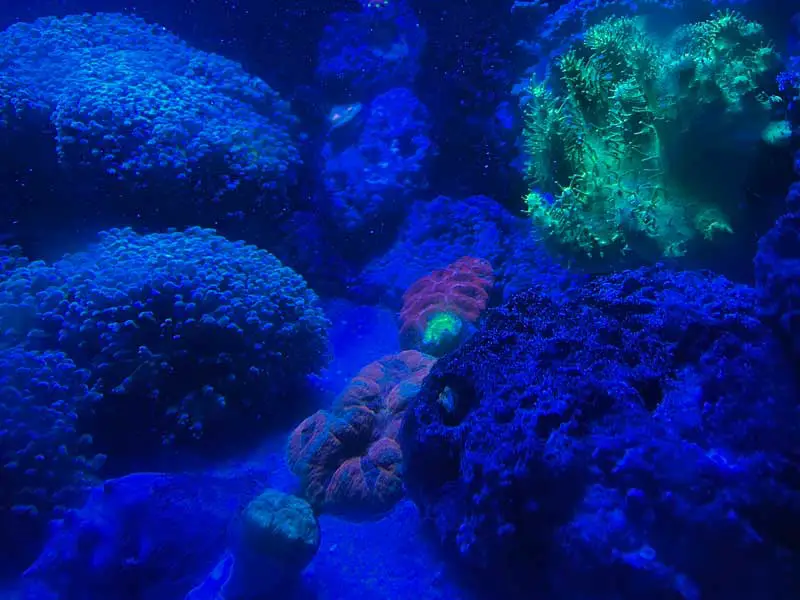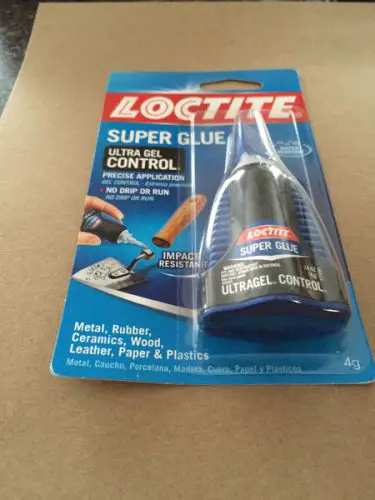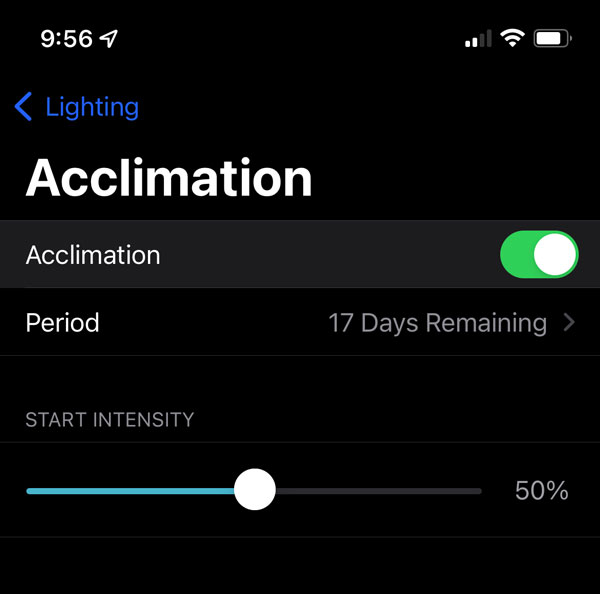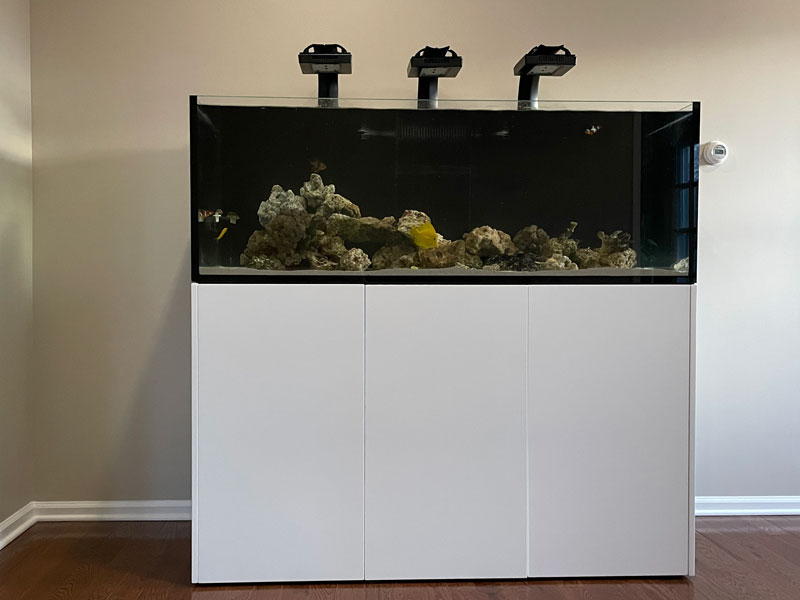Creating and maintaining your own saltwater aquarium is a rewarding and enjoyable experience.
Here are the 9 Best saltwater aquarium tips for beginners to help you on your journey.
1. Install a grounding probe to avoid shocking yourself and your fish
A grounding probe is an inexpensive device that will safely remove stray electricity from your tank so that you don’t electrocute yourself or your fish and corals.
As the name suggests, it’s a simple metal probe with a suction cup that you place underwater in your sump or tank attached to an electrical cord that plugs into your powerstrip.
It is likely no surprise that electricity and water don’t mix. And most of the devices we use are designed to be used in a saltwater environment, but unfortunately, the materials still break down over time. As a result, they can release stray voltage into the water when they fail, shocking everything the water touches.
I hope this is a rare event, but I can tell you that I have had this happen twice. So now I always use a grounding probe.
2. Nets are better for chasing fish into a container than they are for catching them
Don’t take this tip as a license to chase your fish around the tank whenever you want :). But sometimes, you need to catch them to separate fighting fish or move a sick or injured fish to a hospital tank.
Nets were designed to catch fish, but I have always found that they are better at making the fish run away than actually catching them, especially in a tank filled with live rock and corals.
Rather than try to catch the fish with the net, my preferred strategy is to use a transparent container, like a specimen container. Place that in a corner suitable for trapping the fish, and use the net to direct the fish where I want it to go.
If you have the same luck that I do, the fish will be much less afraid of the submerged, non-moving, transparent container and may even seek refuge in that container from the evil net.
3. Begin with the end in mind, whenever possible
I adapted this tip from one of the 7 Habits of Highly Effective People. In that bestselling business book, the author highlights the importance of beginning with the end in mind, meaning that effective people know where they want to go and build a plan to get there.
The same principle generally applies to having an effective saltwater tank, but allow me a moment to elaborate.
Here’s why this is one of the best saltwater aquarium tips for beginners:
Most fish, corals, and invertebrates that we purchase and add to our tanks start out small and grow much larger over time. So if we are really successful, and perhaps a bit lucky, some of the fish and corals you add to your tank today will be with you for a decade or more.
So when I say, “Begin with the end in mind,” I’m giving a nod that the 1-inch frag you have today may grow into a massive colony. That tiny, adorable fish will grow up—and hopefully, they will be around for years to come and may not be compatible with that fish you want to add to the tank one year from now.

Try not to buy something you may regret later, and give your corals enough room to grow so that they’re not fighting over the same piece of rock.
Another thing you can do when you already have the end in mind is to plan out the perfect order to add your fish. Each time you add a fish to your tank, territorial lines get drawn or re-drawn.
If you allow me to anthropomorphize a moment, to make a point, aggressive fish will look at whatever territory in the tank is unclaimed as THEIR territory, for the most part. So if you put an aggressive fish in your tank first…all the tank is theirs. Put them in second, and they’ll expect their half (or more).
Aggression is an issue when the incumbent fish (the fish that thinks it has already established a territory) feels the need to defend it from invaders.
It is generally best to put the relatively less aggressive fish in early and the somewhat more aggressive fish later. The difference can be like night and day. If placed in a tank first or second, the same semi-aggressive fish will bite and nip to defend its territory from certain fish you add later.
But if you hypothetically added that very same fish last to an established, bustling, harmonious tank, it would potentially carve out a peaceful existence without the need to defend what it never ‘owned.’
4. Don’t try to keep incompatible animals together—really—no, really—we mean it—they aren’t compatible
The advice to not keep incompatible animals together may seem straightforward. Still, it is super-important and is one of the primary sources of stress and challenges in a saltwater aquarium.
Please do what you can to understand the care needs and compatibility of any fish, coral, or invertebrate before bringing them home.
When you see compatibility issues like…may eat invertebrates or nip at your coral polyps, assume that the individual you’re buying WILL, don’t believe that you’ll get lucky, or tame them through your fish-whispering abilities.

The same applies to rules like…may be aggressive with conspecifics (other fish from the same species) or may be aggressive with shy fish.
For the first few years, you’ll be much better off if you take those warnings to heart until you’ve built the wisdom and experience to know when, how, and where you can bend those rules a bit in your favor.
5. When all else fails, turn out the lights to knock out problem algae
One of the biggest problems with problem algae is that the underlying problem feeding the bloom can be problematic to diagnose.
The best approach to dealing with algae flare-ups or blooms is to systematically eliminate the source of the spike (often a change in water parameters over time) and then scale up a population of organisms that will outcompete the algae for resources.
Fighting algae is definitely more like a war than it is a battle. The problem that starts the war often occurs over weeks or months, and it can take weeks or months to resolve.
One of the keys to fighting algae is to tip the balance back in favor. Once you’ve restored the water quality to where it needs to be, and you physically clean up and remove as much of that stuff as you can tolerate, a helpful next step can be to cover up the tank with black paper and keep the lights off for 2-3 days.
It will make your corals mad, but they’ll survive. The algae, on the other hand, may not. If you think you might be having issues with problem algae, check out these more detailed guides:
- Fighting green hair algae
- Dealing with bryopsis
- Bubble algae
- Diatoms and brown algae
- Red slime algae cyanobacteria
6. Save money with dry rock and dollar store cyanoacrylate glue
The structural backbone of most reef tanks (and the biological filters that support them) are built with live rock. But live rock is crazy-expensive. Like seriously expensive. I’m a grown man, but if my parents knew how much money I spent on a box of rocks to put in my tank, they would slap me silly.
We all knew this hobby was expensive when we got into it…but…hundreds of dollars for rocks…
A quick hack you can use to extend your money is to bulk up your reef rock with less expensive dry rock. Of course, it won’t be purple and full of life right away, but it will get colonized with all the same essential bacteria, invertebrates, and other good stuff over time.
Then, you can spend your money on a few other prize pieces to give your tank a perfect look.
Also, while I have nothing against those more expensive, designer brands of glue, all glue is sticky, and cyanoacrylate is a commodity. Check the label at your local Walmart, Ace Hardware, or even at the dollar store, and if it says cyanoacrylate… you’re good to go. I prefer the gel because it’s thicker and less runny, but both will work.
The same advice goes for sand and silicone, but buyer beware, you have to pay close attention to those labels because plenty of products will not be reef safe.

7. Acclimate corals by first reducing and then gradually increasing the lights
The LED lights we use over our tanks are designed to create an output similar to the sun. However, when they are cooking at typical intensities, they can cause damage to corals that were traveling in darkness (when shipped overnight) or come from a dealer tank with less intense outputs.

If you were to put a coral used to lower lighting conditions under your bright lights, you could give them a sunburn, or worse, stress them out to the point where they bleach and expel their zooxanthellae.
A bleached coral can sometimes be saved, but it is a dramatic step that often ends in the coral’s death.
Suppose you aren’t sure what lighting intensity your new coral is used to. In that case, it is generally best to acclimate them to your lights over time, either by lowering the intensity, or starting them out in a lower, darker part of the tank, migrating them to your preferred long-term location.
It would take weeks or maybe even months for a coral to ‘starve’ from light conditions that are a little too weak, but they might bleach in less than an hour if you shock them with too bright light.
One of the best saltwater aquarium tips, therefore, is to always be sure to acclimate corals to your lights so that you don’t end up with a bleaching event.

8. Best saltwater aquarium tips for beginners: Label wires to avoid confusion—especially helpful in an emergency, and you ever need someone else’s help in an emergency
If your tank is anything like mine, it is a jumble of power converters, cables, pipes, and tubes.
I know what everything is (for the most part) because I installed it—likely the same way you feel. However, I also know how to ‘figure it out’ through the process of elimination for any of those mystery black power cables plugged into the power strip with the same warning sticker on it.
But I don’t recommend that you rely entirely on those powers of memory or deduction as your full-proof plan for dealing with an emergency.
I suspect that the other primates living in your abode may not know the tank like you do. I also know from experience that you can get tunnel vision in an emergency, and if you want to cut the power to a device or need someone’s help to troubleshoot while you’re remote, the best bet is to have things clearly labeled to avoid confusion.
Telling someone to disconnect the cord labeled ‘heater power’ is much easier than describing what they should be looking for—especially under duress.
You’ll thank me later for implementing one of the best saltwater aquarium tips now, before you need it.
9. The best saltwater aquarium tip for the location for a new tank
There are a few essential considerations when figuring out the best location for a new saltwater tank. For starters, you need to be sure that your floor can support the weight of a saltwater tank. Saltwater is heavy, and most tanks can weigh hundreds of pounds or more! Check with an engineer, like I did, to be sure you won’t damage the floor. But here are a few pieces of advice that I learned along the way (that are NOT a substitute for getting an engineer’s opinion).
- Running the tank perpendicular to the floor joists provides more support, especially for longer tanks.
- Try to locate your tank near a support structure underneath, like a loadbearing wall.
You can deviate from these tips like I had to with my new tank, but it comes at an additional cost.
I had to hire an engineer and general contractor before setting up my new Waterbox aquarium because the perfect location for it in my house, from an aesthetics and personal preference perspective, was running parallel to the joists and was NOT near any support structures. Luckily, it was above the crawl space, and we just built the support structure.

Best saltwater aquarium tips for beginners: avoid high foot traffic areas
Ideally, your tank would not be located in an area with a lot of direct foot traffic. When my kids come barreling into the room, the fish scatter. You’ll have less stressed out fish if you find that perfect location that creates the beautiful look you want but doesn’t send them dashing into the rocks every few seconds, afraid to come out due to the foot-induce vibrations.
Looking for more of the best saltwater aquarium tips?
Check out this book to find 107 Tips for the Marine Reef Aquarium. Go way beyond the tips in this article and learn some of the best saltwater Aquarium Tips for beginners and advanced hobbyists.
You can order a paper copy on Amazon, download the e-book or read it for free if you’re part of Amazon’s Kindle Unlimited.
The book more than pays for itself if you put even one small tip to good use.





Leave a Reply